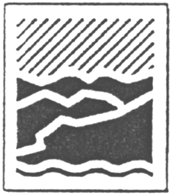
Sweeping for Water Quality
Increase the effectiveness of the sweeping program you currently conduct for aesthetic reasons.
Results of an Alameda County study.
To increase the effectiveness of street sweeping
as a water pollution control measure:
- Sweep up the smallest particles feasible.
- Maximize travel along street edges where dirt tends to collect. (This probably will require parking controls).
- Sweep near enough before an approaching rainstorm that particles and pollutants do not have time to accumulate to significant levels before being washed off by the storm.
- Properly maintain sweepers and operate according to manufacturers' directions.
- Sweep the dirtiest appearing streets more frequently than the others.
To maximize the amount of particles
removed from the street:
- Street sweeping should be reduced to three times per week in areas now being swept more frequently, and increased in areas less frequently swept.
- Emphasize street sweeping during the wet season when it is most effective in reducing pollutants to storm water.
- Streets should be swept as close to the street curb as possible, and sweepers operated according to manufacturers' specifications with regard to speed and maintenance.
- Parking controls should be imposed during street sweeping hours, especially on heavily traveled or dirty streets.

Source:
Street Sweeping/Storm Inlet Modification
Literature Review
Prepared by Woodward-Clyde Consultants
for Alameda County Urban Runoff
Clean Water Program.
For more information call Chris at
Alameda County; 510-670-5543.
To reach Woodward-Clyde, call 510-893-3600.
This article is reprinted from American Sweeper magazine, v4 n2.
|